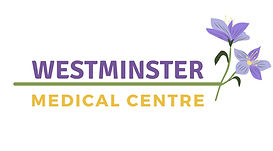The Rundown on Fibroids with Professor Horace Fletcher
- Westminster Medical Jamaica
- Apr 19, 2023
- 3 min read
Updated: Apr 20, 2023

As one of the region’s leading researchers on the topic, it's safe to say Consultant Obstetrician-Gynaecologist, Professor Horace Fletcher knows a thing or two about uterine fibroids. With this in mind, we asked him to give us a rundown on this condition to help our readers better understand it.
First, what are uterine fibroids?
Uterine fibroids are abnormal, noncancerous growths that occur inside or around the uterus or womb. “They are the most common gynaecological conditions,” Professor Fletcher states. One post-mortem study estimated that 80% of women had them.

Despite being common, most fibroids cause no issues. “Most are very small. I would say that only half of the women who have fibroids experience any severe symptoms,” says Professor Fletcher. “Many times, women don’t even know they have fibroids until they are found incidentally during a routine appointment because they only have mild symptoms.”
So what fibroids cause issues?
Fibroids come in a range of sizes, from the size of a pea to the size of a jackfruit.

Typically, the larger the fibroid, the more likely you are to experience symptoms, “though that’s not always the case,” Professor Fletcher notes. Another factor that can impact whether you have symptoms is where the fibroid is located. “For example, fibroids that occur inside the uterine cavity cause the most the symptoms, regardless of size.”
Types of Fibroids
Fibroids are classified by where they are located. It is possible to have more than one “type” of fibroid or multiple fibroids in the same location.

The three main types are:
Subserosal fibroids: These grow on the outside of the uterus and into the pelvis. These tend to grow the largest.
Submucosal fibroids: These grow from the muscle layer beneath the lining of the womb into the uterine cavity. These cause the most symptoms but are also the rarest of the three.
Intramural fibroids: These grow in the muscle wall of the uterus. These are the most common type of fibroid.
Subserosal and submucosal fibroid can also be ‘pedunculated’, where they hang from a stalk-like growth called a ‘peduncle’.
Symptoms of Fibroids
When fibroids do cause symptoms, though, it can be quite disruptive. “The most common symptom is heavy, painful periods,” says Professor Fletcher. These periods can last for well over a week.

During menstruation, the uterine lining that thickens during ovulation sheds, leading to bleeding. To help with this shedding, the uterus contracts or ‘cramps’, pushing the blood out.

“As fibroids grow, they press against the lining. They can also stimulate the growth of blood vessels,” says Professor Fletcher. “This can cause heavier bleeding.” This heavier bleeding can also result in more intense cramps as the uterus tries to get the excess blood out.
Fibroids also increase the number of prostaglandins, the hormone-like substance that causes the uterus to contract, resulting in more severe cramps.
Other possible symptoms include:
Spotting or bleeding between periods. “As the fibroid grows, it can affect how well the uterus contracts, so not all the lining is shed during menstruation.”
Bulge in the abdomen
Pelvic pressure or pain
Back pain
Increased urination or urinary incontinence
Painful sex
Constipation
Risk Factors
Women of all races and ages can develop fibroids. While they mainly occur during the childbearing years, they are found in women going through menopause. That said, black women have been shown to be more likely to develop fibroids, making them more likely to experience the symptoms mentioned above. Unfortunately, Professor Fletcher notes, “the risk factors among black women, in particular, are unknown.”
How are they treated?
While some patients may require surgery, Professor Fletcher says, “that is only if there are severe symptoms.” Where you have mild symptoms or none at all, surgery is only considered in particular instances. “For example,” explains Professor Fletcher, “in very young women who are trying to get pregnant, if the fibroids are causing no symptoms, surgery is a last resort.”
Non-surgical treatment options include oral iron treatment to avoid anaemia, as well as certain contraceptives. “Injectable contraceptives like Depo-Provera can help to decrease the bleeding,” Professor Fletcher explains. “And some intra-uterine devices contain hormones that do the same, like Mirena.”
Sometimes, Professor Fletcher says, both surgical and non-surgical treatment options are used together. “Gondatrophin releasing hormones agonists (GnRH) is used to temporarily shrink fibroids before removal via surgery.”
Overall, the best treatment option is determined on a case-by-case basis. Other treatment options include oral contraceptives.
Should I see a doctor?
“Only if you are experiencing severe symptoms, like very heavy or painful periods,” Professor Fletcher says.“You should also come in if you have pressure symptoms, like frequent urination or incontinence, as this could be caused by a large fibroid resting on the bladder.” Finally, “You can also come in if you feel a mass or bulge in the lower abdomen.”

.jpeg)


Thank you for this informative post on fibroids with Professor Horace Fletcher. It’s reassuring to learn about the various options available for managing fibroids. Exploring Non Surgical Treatment For Fibroids can be life-changing for many women seeking less invasive solutions. Your detailed explanation helps raise awareness and guide better health decisions. Keep sharing such valuable insights!